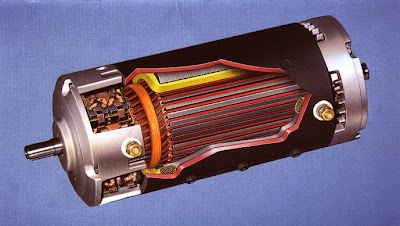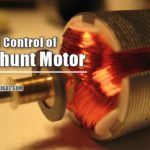Armature reaction also occurs in a DC motor just like armature reaction in DC Generator.
This is expected because when current flows through the armature conductors of a DC motor, it produces flux (armature flux) which lets on the flux produced by the main poles.
For a motor with the same polarity and direction of rotation as is for the generator, the direction of armature reaction field is reversed.
In a generator, the armature current flows in the direction of the induced e.m.f. (i.e. generated e.m.f. Eg) whereas in a motor, the armature current flows against the induced e.m.f. (i.e. back e.m.f. Eb).
Therefore, it should be expected that for the same direction of rotation and field polarity, the armature flux of the motor will be in the opposite direction to that of the generator.
Hence instead of the main flux being distorted in the direction of rotation as in a generator, it is distorted opposite to the direction of rotation.
We can conclude that:Armature reaction in a DC generator weakens the flux at leading pole tips and strengthens the flux at trailing pole tips while the armature reaction in a DC motor produces the opposite effect.
In case of a DC generator, with brushes along G.N.A. and no commutating poles used, the brushes must be shifted in the direction of rotation (forward lead) for satisfactory commutation.
However, in the case of a DC motor, the brushes are given a negative lead i.e., they are shifted against the direction of rotation.
With no commutating poles used, the brushes are given a forward lead in a DC generator and backward lead in a DC motor.
By using commutating poles (compoles), a DC machine can be operated with fixed brush positions for all conditions of load.
Since commutating poles windings carry the armature current, then, when a machine changes from a generator to motor (with consequent reversal of current), the polarities of commutating poles must be of opposite sign.
Therefore, in a d.c. motor, the commutating poles must have the same polarity as the main poles directly back of them. This is the opposite of the corresponding relation in a DC generator.







